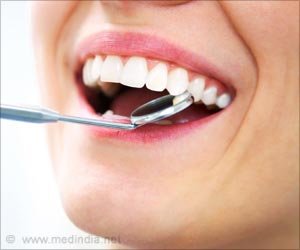Artificial Tongue Helps Fight Dental Bacteria

Addressing dental health challenges, researchers unveil an artificial tongue, a chemical sensor array that offers a swift and cost-effective method to identify and deactivate dental bacteria, as published in ACS Applied Materials & Interfaces (1✔ ✔Trusted Source
Enhanced ‘Electronic Tongue’ for Dental Bacterial Discrimination and Elimination Based on a DNA-Encoded Nanozyme Sensor Array
).
When bacteria are suspected as the agent behind dental disease, such as cavities or periodontitis, the first step is to identify the source.
#dentalbacteria #artificialtongue #dentaltreatment
’
Traditional detection and identification methods can involve culturing or looking for specific DNA markers belonging to different species using sophisticated equipment. So, Na Lu, Zisheng Tang, and coworkers wanted to investigate a simple and less expensive alternative: sensor arrays known as electronic or artificial tongues.
Previously developed artificial tongues have detected and measured several types of bacteria, similar to how a real tongue can taste multiple flavors at once. And the researchers wanted to add the capability of reducing the effects of or inactivating, the identified dental bacteria.
Sensing Smiles through Dental Care
The researchers turned to a nanoscopic particle that mimics natural enzymes, called a nanozyme, and made them from iron oxide particles coated in DNA strands.
When hydrogen peroxide and a colorless indicator were added to the solution, the presence of nanozymes caused the indicator to turn bright blue. However, bacteria that adhered to the DNA decreased the nanozyme’s reactivity, reducing the amount of blue color produced.
The researchers coated nanozymes with different DNA strands so that each type of bacteria could be linked to a unique change in color signals. To test the DNA-nanozyme system, as an artificial tongue, the researchers created samples of 11 different dental bacteria species.
The sensor array was able to identify all the bacteria in artificial saliva samples. Then, using the DNA-encoded nanozyme sensor array, the researchers were able to distinguish whether a dental plaque sample came from a healthy volunteer or from a person with cavities.
Advertisement
Did You Know?
Dental bacteria can form a complex community known as a biofilm on your teeth? This biofilm, often referred to as plaque, not only contributes to tooth decay and gum disease but can also release acids that weaken tooth enamel over time.
In addition, the DNA-encoded nanozyme sensor array had antibacterial effects on the dental bacteria species tested. Compared to controls without the nanozymes, three typical bacterial species were inactivated in solutions containing the nanozyme system.
Scanning electronic microscopic images suggest to the researchers that the nanozyme system destroyed the bacteria membranes. They suggest that this sensor system could also be used in the future to diagnose and treat bacterial dental diseases.
Advertisement
Reference:
- Enhanced ‘Electronic Tongue’ for Dental Bacterial Discrimination and Elimination Based on a DNA-Encoded Nanozyme Sensor Array
– (https://pubs.acs.org/doi/10.1021/acsami.3c17134)
Source-Eurekalert
Source link
#Artificial #Tongue #Helps #Fight #Dental #Bacteria



